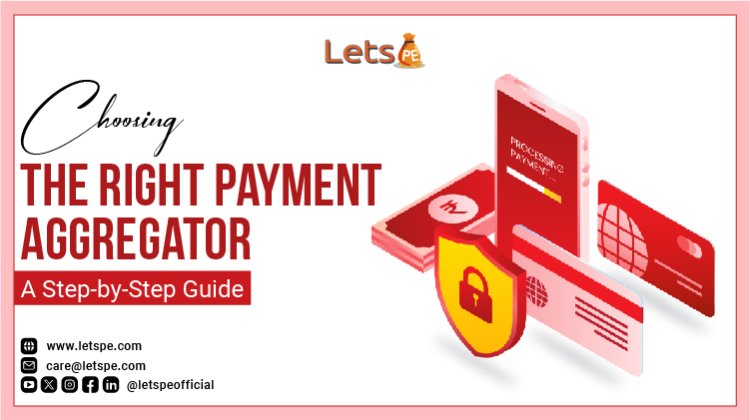Choosing the Right Payment Aggregator: A Step-by-Step Guide
This step-by-step guide will walk you through the process of selecting the right payment aggregator for your business.

In the digital landscape, having a reliable payment aggregator is crucial for businesses looking to accept online payments. Whether you're running an e-commerce store, a subscription-based service, or a freelance business, choosing the right payment aggregator can streamline your transactions and boost the overall customer experience. However, with numerous options available, it can be tough to know where to start. This step-by-step guide will walk you through the process of selecting the right payment aggregator for your business.
1. Understand Your Business Needs
Before diving into the world of payment aggregators, give yourself some time to understand your business needs. You can consider these suggestions:
- What types of products or services do you offer?
- Do you need to accept global payments?
- What is your expected transaction volume?
- Do you need specific payment methods, such as credit cards, digital wallets, or bank transfers?
- What is your budget for payment processing fees?
A clear understanding of your business needs will help you narrow down your choice when choosing a payment aggregator.
2. Research Payment Aggregator Options

Once you have a clear picture of your business requirements, start researching payment aggregator options. Look for providers that offer the features and services that align with your requirements. Consider factors like:
Transaction fees: Compare the fees charged by different payment aggregators, including setup fees, per-transaction fees, and monthly fees.
Supported payment methods: Make sure that the payment aggregator supports the payment options your customers prefer.
Integration options: Select a payment aggregator that integrates seamlessly with your existing website or e-commerce platform.
Security features: Look for a payment aggregator that offers advanced security features, like encryption and fraud detection.
Customer support: Consider the level of customer support offered by the payment aggregator, including availability and responsiveness.
3. Evaluate Payment Aggregator Reputation
Before making a decision, take the time to judge the reputation of the payment aggregator. Look for reviews and testimonials from other businesses that have used the service. Pay attention to factors such as reliability, customer service, and overall satisfaction.
4. Sign Up for an Account
Once you've selected a payment aggregator, sign up for an account. Provide the necessary information about your business and banking information to complete the registration process.
5. Integrate the Payment Aggregator

Depending on your website platform, there are different integration options available. Most payment aggregators offer plugins or APIs for easy integration. Follow the provider's instructions to integrate the aggregator with your website.
6. Configure Payment Settings

After integration, configure the payment settings according to your preferences. This includes setting up accepted payment options, currencies, and transaction rules.
7. Test Transactions
Before making the payment aggregator live, test transactions to make sure everything is working correctly. Most payment aggregators offer a sandbox or test mode for this purpose.
8. Go Live
Once you've tested the payment aggregator successfully, switch it to live mode to start collecting real payments from your customers.
9. Monitor and Maintain
Regularly monitor your payment aggregator transactions for any issues or discrepancies. Keep your payment aggregator and website plugins up to date to make sure security and functionality.
10. Compliance and Security
Ensure your payment aggregator is compliant with relevant regulations (e.g., PCI DSS) and follow best practices for data security to guard your customers' payment information.
Conclusion
Selecting the right payment aggregator is a very important decision for any business looking to collect online payments. By following this step-by-step guide and considering factors such as transaction fees, supported payment methods, security features, and customer support, you can choose a payment aggregator that matches your business needs and offers a seamless payment experience for your customers.

 letspe_admin
letspe_admin 










